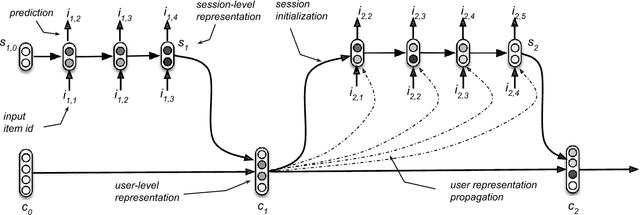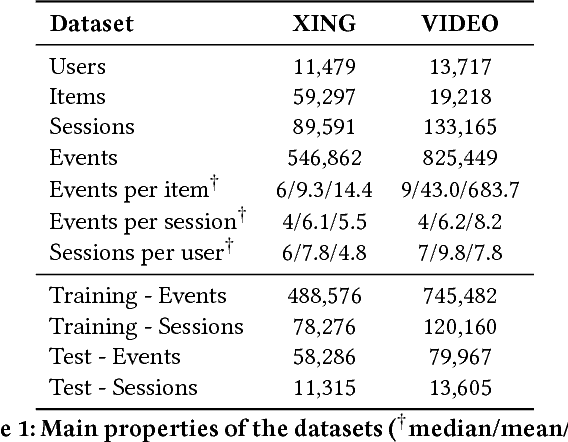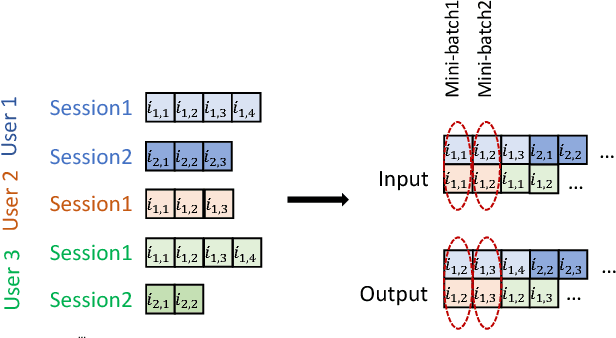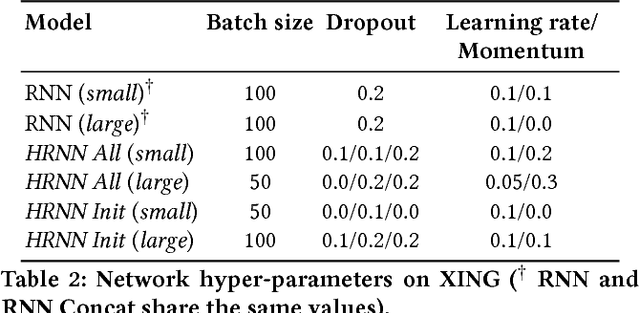Massimo Quadrana
Multi-objective Hyper-parameter Optimization of Behavioral Song Embeddings
Aug 26, 2022



Abstract:Song embeddings are a key component of most music recommendation engines. In this work, we study the hyper-parameter optimization of behavioral song embeddings based on Word2Vec on a selection of downstream tasks, namely next-song recommendation, false neighbor rejection, and artist and genre clustering. We present new optimization objectives and metrics to monitor the effects of hyper-parameter optimization. We show that single-objective optimization can cause side effects on the non optimized metrics and propose a simple multi-objective optimization to mitigate these effects. We find that next-song recommendation quality of Word2Vec is anti-correlated with song popularity, and we show how song embedding optimization can balance performance across different popularity levels. We then show potential positive downstream effects on the task of play prediction. Finally, we provide useful insights on the effects of training dataset scale by testing hyper-parameter optimization on an industry-scale dataset.
Personalizing Session-based Recommendations with Hierarchical Recurrent Neural Networks
Aug 23, 2017



Abstract:Session-based recommendations are highly relevant in many modern on-line services (e.g. e-commerce, video streaming) and recommendation settings. Recently, Recurrent Neural Networks have been shown to perform very well in session-based settings. While in many session-based recommendation domains user identifiers are hard to come by, there are also domains in which user profiles are readily available. We propose a seamless way to personalize RNN models with cross-session information transfer and devise a Hierarchical RNN model that relays end evolves latent hidden states of the RNNs across user sessions. Results on two industry datasets show large improvements over the session-only RNNs.
Using Mise-En-Scène Visual Features based on MPEG-7 and Deep Learning for Movie Recommendation
Apr 20, 2017



Abstract:Item features play an important role in movie recommender systems, where recommendations can be generated by using explicit or implicit preferences of users on traditional features (attributes) such as tag, genre, and cast. Typically, movie features are human-generated, either editorially (e.g., genre and cast) or by leveraging the wisdom of the crowd (e.g., tag), and as such, they are prone to noise and are expensive to collect. Moreover, these features are often rare or absent for new items, making it difficult or even impossible to provide good quality recommendations. In this paper, we show that user's preferences on movies can be better described in terms of the mise-en-sc\`ene features, i.e., the visual aspects of a movie that characterize design, aesthetics and style (e.g., colors, textures). We use both MPEG-7 visual descriptors and Deep Learning hidden layers as example of mise-en-sc\`ene features that can visually describe movies. Interestingly, mise-en-sc\`ene features can be computed automatically from video files or even from trailers, offering more flexibility in handling new items, avoiding the need for costly and error-prone human-based tagging, and providing good scalability. We have conducted a set of experiments on a large catalogue of 4K movies. Results show that recommendations based on mise-en-sc\`ene features consistently provide the best performance with respect to richer sets of more traditional features, such as genre and tag.
 Add to Chrome
Add to Chrome Add to Firefox
Add to Firefox Add to Edge
Add to Edge